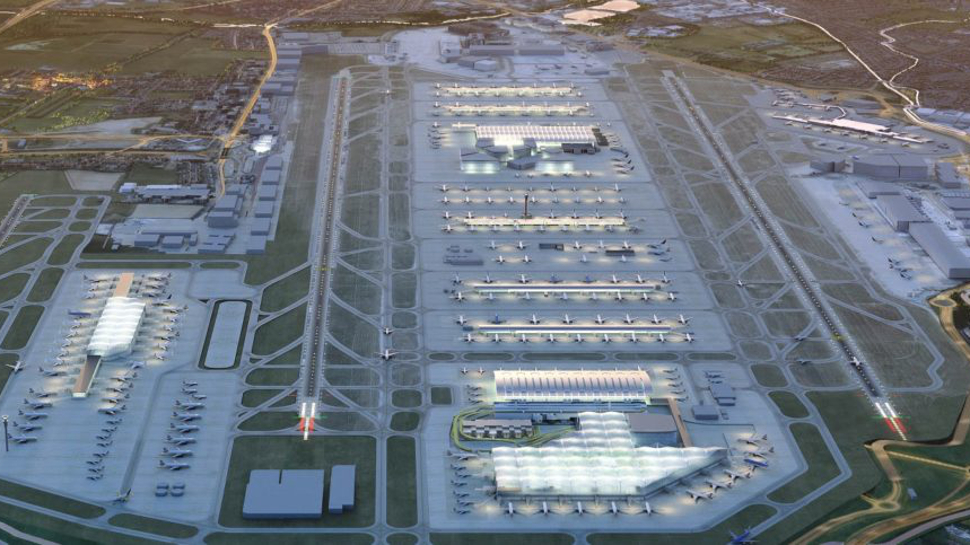Heathrow Airport’s expansion could be built with the help of 3D printers
At least if the project goes ahead, and Royal Bam is successful with its tender bid

European construction giant Royal Bam is hoping to use its 3D printing expertise to help in the building of Heathrow Airport’s planned expansion.
Royal Bam opened a concrete 3D printing factory over in the Netherlands (at Eindhoven) back at the start of the year, and is planning further expansion – potentially to the UK and Ireland.
- 3D printers can build a house in 2 days
- Check out the best printers for home use
- These are the best 3D printers of 2019
And according to Construction News, even if there is no UK factory yet, it would be no problem to ship 3D-printed components to the UK as part of Heathrow’s proposed expansion project (which involves a third runway).
Bam Infraconsult innovation adviser Jeroen Nuijten spoke to Construction News, and noted: “We are talking to different customers. For example, London Heathrow has a huge amount of work that needs to be done [on the expansion], as well as a big problem with how to do it logistically.
“They are in the process of creating a tender, and we'll see if we are [selected as] a partner for them.”
Construction News contacted Heathrow Airport regarding this possibility, but it declined to comment.
Offsite hubs
However, Heathrow’s commercial delivery director, Emma-Jane Houghton, had previously told the publication that the expansion will be “delivered through mixed-use construction hubs”, with four offsite hubs involved.
Sign up to the TechRadar Pro newsletter to get all the top news, opinion, features and guidance your business needs to succeed!
Bam has 10 operating companies across five European markets, which include the UK and Ireland, along with the Netherlands, Belgium and Germany. The organisation has around 20,000 employees.
Bam is part of the RiverLinx consortium, which has just signed a contract with Transport for London on the Silvertown Tunnel project. This is a road tunnel under the Thames linking Greenwich Peninsula and Silvertown, with construction expected to begin next year, and completion anticipated in 2025.
The idea is to reduce congestion at the Blackwall Tunnel, and the new Silvertown Tunnel will be the first road tunnel in the UK to have dedicated bus lanes (which will facilitate the swift passage of almost 40 buses per hour during peak times).
As for 3D printing being used in the building industry, this is something we are hearing a lot more about now, including the construction of large two-storey buildings using 3D printers, and a new eco-housing model which is planned around homes fashioned from mud, no less.
Darren is a freelancer writing news and features for TechRadar (and occasionally T3) across a broad range of computing topics including CPUs, GPUs, various other hardware, VPNs, antivirus and more. He has written about tech for the best part of three decades, and writes books in his spare time (his debut novel - 'I Know What You Did Last Supper' - was published by Hachette UK in 2013).